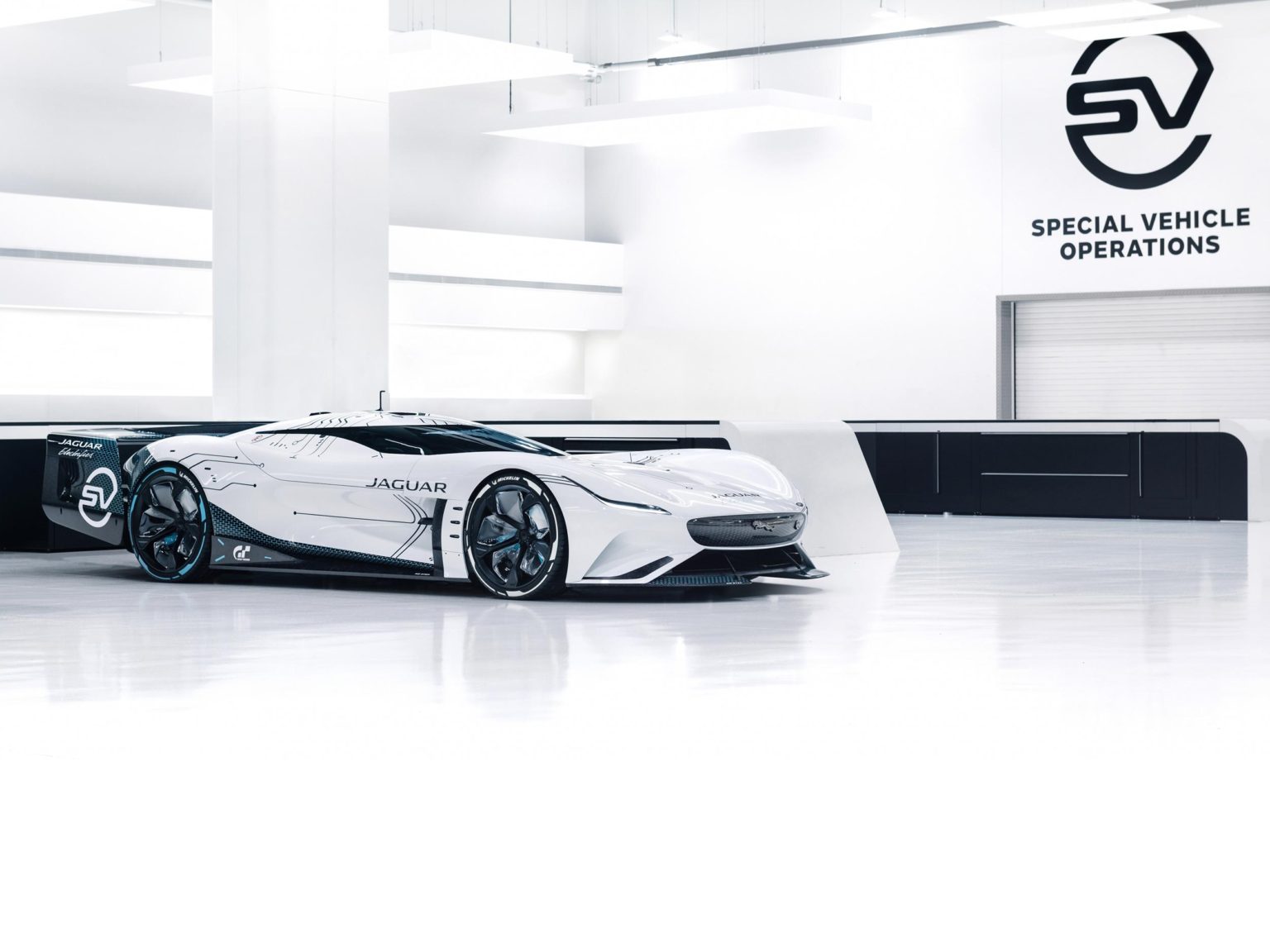This one’s not meant for the streets. Or the track. Or really anywhere on the planet. The Jaguar Vision Gran Turismo SV is the latest all-electric virtual race car developed for the Gran Turismo video game.
But, the model does have a real world twist. Though Gran Turismo supports nearly fantasy-like models, the Vision Gran Turismo SV was built in the real-world as full-scale design study. It will come to the game in 2021.
The new car builds on the success of the Jaguar Vision Gran Turismo Coupé – the first all-electric Jaguar sports car created for the Gran Turismo game. That car provided the starting point for the teams from Jaguar Design, Jaguar Special Vehicle Operations (Jaguar SV), and Jaguar Racing when creating the new model. The group also took inspiration and feedback from online videos and forums, which allowed them to conduct “virtual world testing”.
“Jaguar vehicles created for the race track and the road have always shared the same DNA – whether that’s the D-type and XKSS, or the I-Pace and the I-Type,” said Julian Thomson, Design Director, Jaguar. “So, when the design team behind the Vision GT Coupé were asked to create the ultimate electric gaming endurance racer for Gran Turismo, they worked with engineers from SV and Jaguar Racing to create something really special.”
“The Vision GT SV is a dramatic and visually arresting car which showcases what’s possible when the traditional boundaries governing real-world car design are completely removed,” Thomson said. “In bringing this car to life with a full-size design study we’ve been able to showcase the most extreme version of an electric Jaguar race car that is inspired by the past but looks fearlessly to the future.”
It features a 107.1-inch wheelbase and measures 218.1 inches from nose to tail. The car is 33.9 inches longer than the Coupé and offers increased downforce resulting in greater traction when cornering. A splitter and deployable rear wing come as standard equipment.
The car is powered by four electric motors that deliver 1,877 horsepower and can move the car from zero to 60 mph in just 1.65 seconds. It has a top speed of 255 mph and redlines at 40,000 rpm.
Its interior features nods to Jaguar models of the past including the C-type and D-type in 1951 and 1954, respectively. There’s also Typefibre fabrics used to cover the composite seats. The fabric is being tested as a substitute for leather, first on the I-Type 5 during season 7 of the ABB FIA Formula E World Championship.








